This Jaguar set the tone for importing under Show or Display
Gary Bartlett didn’t set out to be the first person to import a car under the Show or Display rule—he and his wife just happened to sit at the right dinner table at the right time. The ensuing adventure would pave the way for importers who use the rule to this day to bring rare and historically significant foreign-market cars to the United States.
Show or Display, the provision that is the only legal way to import cars that are less than 25 years old into the U.S., is now over two decades old. The process for adding a vehicle to the Department of Transportation’s (DOT) list of accepted cars and making sure it clears the necessary Environmental Protection Agency (EPA) emissions hurdles remains tedious, but after 23 years, the steps are now established and clear. That wasn’t the case when Bartlett struck up the conversation in the spring of 1999 that would lead him down this path.
“We had driven our Jaguar XKSS to Belgium for a speed trial, and through an odd series of events we ended up at a table next to the managing director of Jaguar, Mike Beasley,” says Bartlett. “In the course of our conversation, I mentioned that I’d love to own a Jaguar XJ220, and he said they had 14 that remained unsold that they’d love to dump—I think those were his exact words. That’s when we started talking about Show or Display—the ‘Bill Gates law’ that was about to come into effect, and how it could soon be possible to legally import the XJ220 to America.”
As Bartlett implies, Mircosoft founder Bill Gates was largely responsible for this provision. In the late 1980s, Gates imported a new Porsche 959 to California, only for it to be held up with customs for years because foreign-market vehicles under 25 years old were not legal for importation. It took time, but the advocacy of Gates and others successfully carved out the legislative solution that passed Congress in 1998, which would come to be referenced as Show or Display.
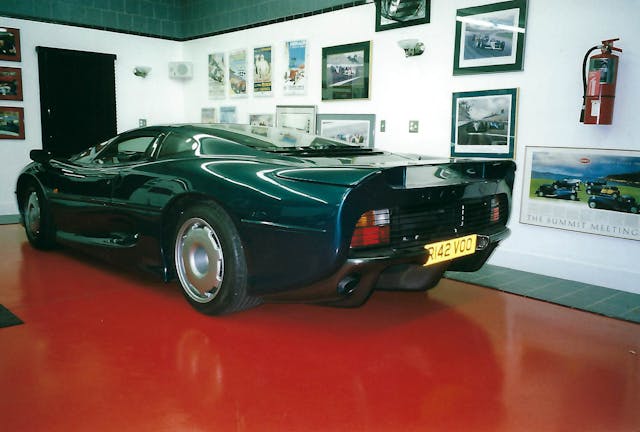
The language, tucked in a much larger bill with other transportation-related authorizations, enabled the DOT to exempt certain motor vehicles from certain motor-vehicle safety standards if they were imported for the purpose of show or display. Establishing the requirements and process for implementation would be left to the agency itself.
Meanwhile, after their initial conversation, Bartlett and Beasley began to firm up the deal for the XJ220. Jaguar was a motivated seller—if Bartlett could successfully secure eligibility for the XJ220 under the new provision, that would open up the U.S. market and hopefully enable the sale of the remaining XJ220s languishing in Coventry. Ultimately, it was decided that Jaguar would sell Bartlett an XJ220 at a reduced price if he would go through the process, and the company would also provide the necessary support to help ensure the car would pass U.S. emissions requirements.
Bartlett submitted his application to the DOT on August 11, 1999—two days before the law took effect. At that point, it wasn’t merely a matter of waiting for the agency to respond—as the first applicant, Bartlett and his XJ220 were about to become the test case that established precisely what went into determining a car’s eligibility under Show or Display. Working with a federal agency might sound like a daunting task, but Bartlett soon discovered what may have been the primary factor for Show or Display’s success: There was a car guy in charge of its implementation.
“If it hadn’t have been for somebody like Dick Merritt serving as the National Highway Traffic Safety Administration’s Vehicle Compliance Officer, who knows what would’ve happened,” says Bartlett. “Merritt actually knew cars, and it was fortuitous at the time that he was there.”
Decades earlier, Bartlett had met Merritt while attending a mechanic’s school in Chicago that specialized in training on Ferraris. Merritt instructed there, and had established himself as a preeminent authority on that marque. Fast forward to the summer of 1999, the two reestablished their connection and, along with Bartlett’s employee, Ken Sheppard, got down to business navigating the new Show or Display rule.
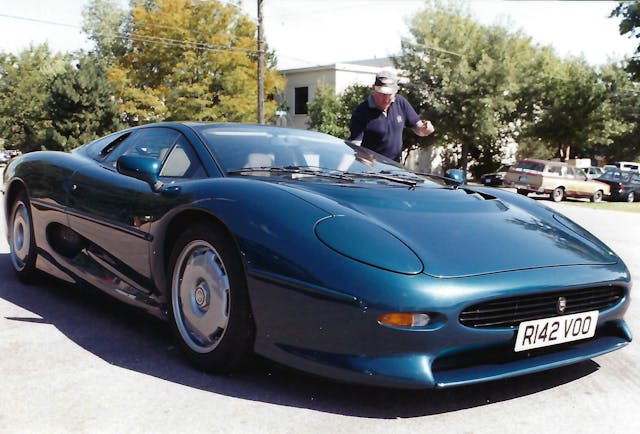
“Dick gave us the guidelines in the new law, but they needed to be put into a format that applicants could understand,” Bartlett says. “We worked with him to help create that format. Dick and I would talk on the phone—I remember him being a very precise, matter-of-fact kind of guy—then Ken and I would work on the language and submit it back via fax. He would look at it, make notes, and either call me or fax it back. At the end, the process for determining eligibility was still somewhat complex, but it was much more manageable for applicants and DOT.”
The resulting process put finer points on the provision’s requirement that only historically or technologically significant vehicles that were never certified by their manufacturer for U.S. sale would be eligible. These include questions as to whether the vehicle is still in production, whether its production exceeded 500 units, and whether it is a kit car or replica. Any “yes” answers to those questions (along with two others pertaining to certification and importation) means a likely rejection letter, though if production exceeded 500 units, you are welcome to submit additional information supporting your cause. These remain the eligibility standards by which potential Show or Display importations are judged today.
Thanks in large part to Merritt’s cooperation, the XJ220 cleared the DOT eligibility hurdle. Concurrent with Bartlett, Merritt, and Sheppard sorting the paperwork, though, was the XJ220’s emissions testing. That was a stickier wicket.
The car had to meet EPA emission standards for the year in which it was constructed, 1994. “The lab we used to test the XJ220 was called Compliance and Research Services in Linden, New Jersey,” says Bartlett. “That’s who Jaguar contracted with on some of their new cars.” All did not go smoothly, however.
“When it came over here the first time, we took it to the lab and it failed miserably. That’s when Jaguar’s commitment to assist with emissions compliance became so invaluable,” Bartlett says. Others seeking to import through Show or Display didn’t enjoy manufacturer support and had to work with private shops to retune their cars—something that’s not simple today but was a much more complex undertaking at that time. Bartlett packed the car up and sent it back to Jaguar’s Whitley Engineering Center in Coventry.
“The car went back and forth several times. Every time we had to be sure the paperwork was right or customs would impound the car,” he says. “The engineers in Whitley found out that by changing the camshaft timing, using Swiss software and new converters, it would pass the U.S. EPA tests. It was already an incredibly powerful car,” adds Bartlett, “but it turns out these changes actually increased power in addition to making the car compliant.” The Jaguar became 49-state legal (it failed the California Air Resource Board’s evaporative emissions tests), and that was enough for Bartlett, who resides in Indiana.
On March 1, 2000, a little more than six months after Bartlett submitted his application, NHTSA granted entry to the Jag under Show or Display with a letter marked SD-00-001, indicating it was the first vehicle approved through that process. The car was now his to enjoy within the 2500 miles that Show or Display allowed per year.
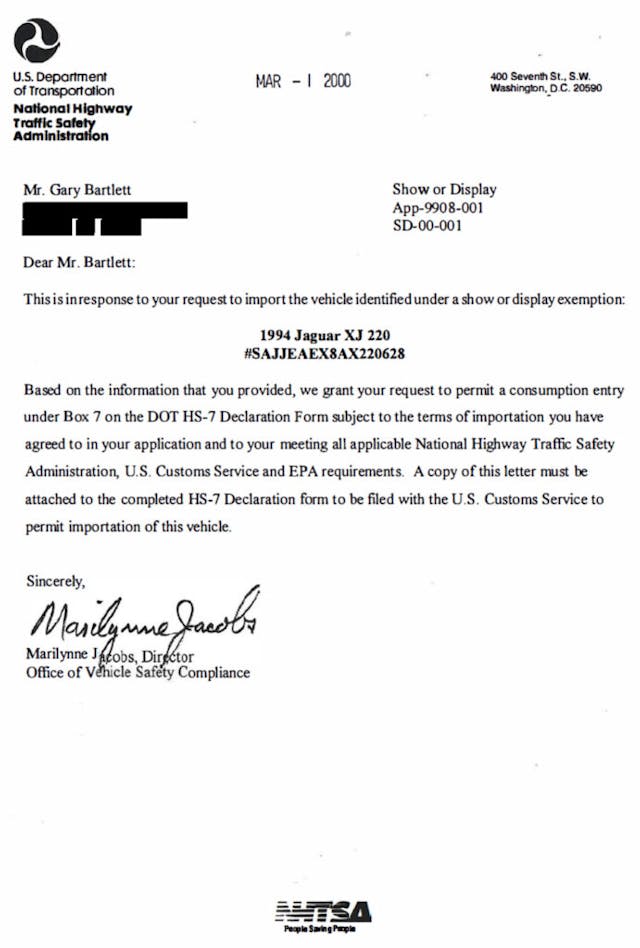
You might think that after all the work he put in, and the fact that Bartlett is a passionate, lifelong Jaguar fan, that his salad days with the XJ220 began with that letter. Unfortunately, he came to know firsthand why Jaguar had trouble unloading the final 14 cars. “I drove the car back to Indiana from New York, and by the time I got home,” he says, “I thought, ‘What the hell have I bought?’”
Bartlett was one of many who fell in love when the XJ220 concept debuted in October 1988. Its four-cam, 6.2-liter V-12 sent power to all four wheels, and the car sported then state-of-the-art four-wheel steering and four-channel ABS. It was a tantalizing vision of what the next-generation Jaguar supercar could be.
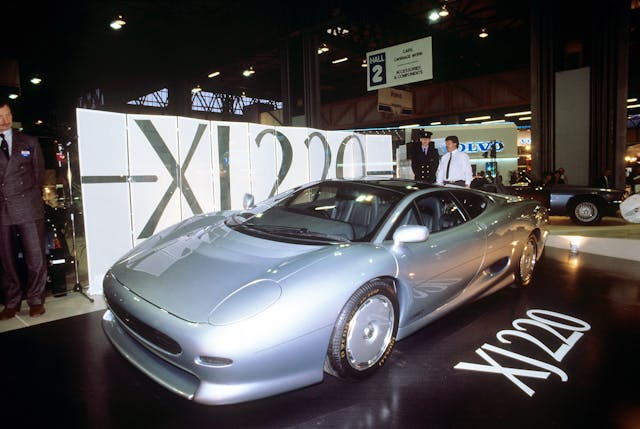
Disappointingly, the production XJ220 would end up a shell of what the concept promised, with the Jaguar-Tom Walkinshaw partnership settling on a 542-hp 3.5-liter V-6 that, while powerful, sounded nothing like the big V-12s that Jaguar was famous for and had used to win at Le Mans in 1990. It also scaled back on the tech, eliminating the four-wheel steering and all-wheel drive. To make matters worse, the supercar market took a dive right around the production XJ220’s 1992 debut, further assuring the car’s poor sales.
Of course, Bartlett knew this in 1999. “It’s a gorgeous Jaguar, and I’m a serious Jaguar guy,” he says, and he pushed ahead.
A seasoned amateur racer with an FIA license, Bartlett knows a thing or two about reaching a car’s capabilities. “The 220 was brutally fast in a straight line, but didn’t stop very well. It also had a wicked tendency to go from understeer to a nasty oversteer,” he says. “The transmission was OK, but it was almost agricultural in how it shifted—the gears felt big and heavy. It also had a fair amount of turbo lag. It would take somebody the likes of David Coulthard, David Brabham, and John Nielsen, who won their class at Le Mans in 1993 in an XJ220, to really get the most out of this car.”
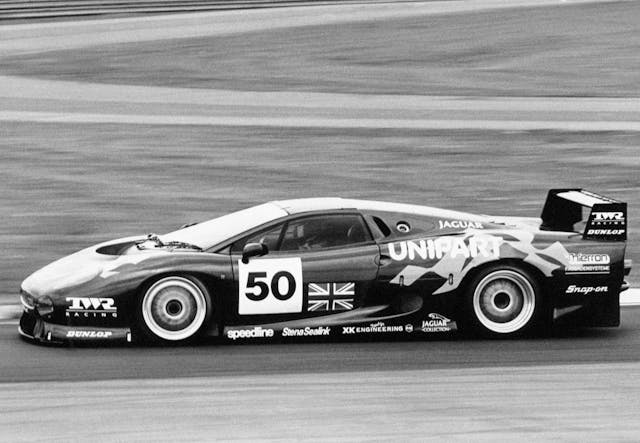
Even though the car itself was a disappointment, Bartlett remembers the experience fondly. “What shop could you go to that would have the expertise that Jaguar’s Whitley Engineering Center had?” he asks. “Traveling there with the car to work on EPA compliance meant spending a lot of time with the engineers, surrounded by all the experimental projects they were working on. It was a fascinating place, and that was a heck of a lot of fun for me.”
Bartlett’s fun times have helped yield enjoyment for others as well. Though it all started with a happy accident, his direct role at the beginning of Show or Display helped build the path for a wealth of interesting cars to make their way to the States, from Porsche 959s to McLaren Speedtails and iterations of the incredibly popular Nissan Skyline GT-R. Remember that next time you sit down next to a stranger at dinner.
***
Check out the Hagerty Media homepage so you don’t miss a single story, or better yet, bookmark it. To get our best stories delivered right to your inbox, subscribe to our newsletters.
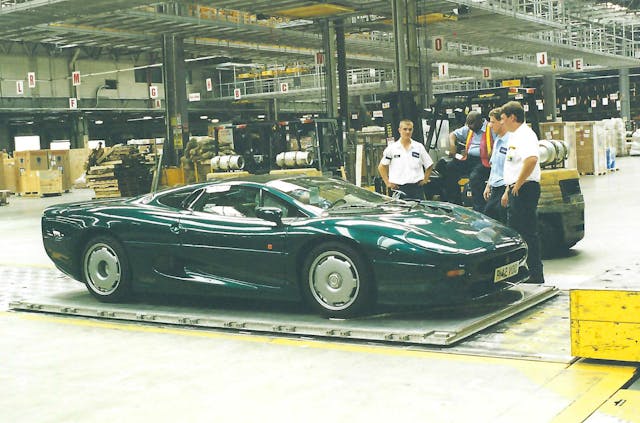
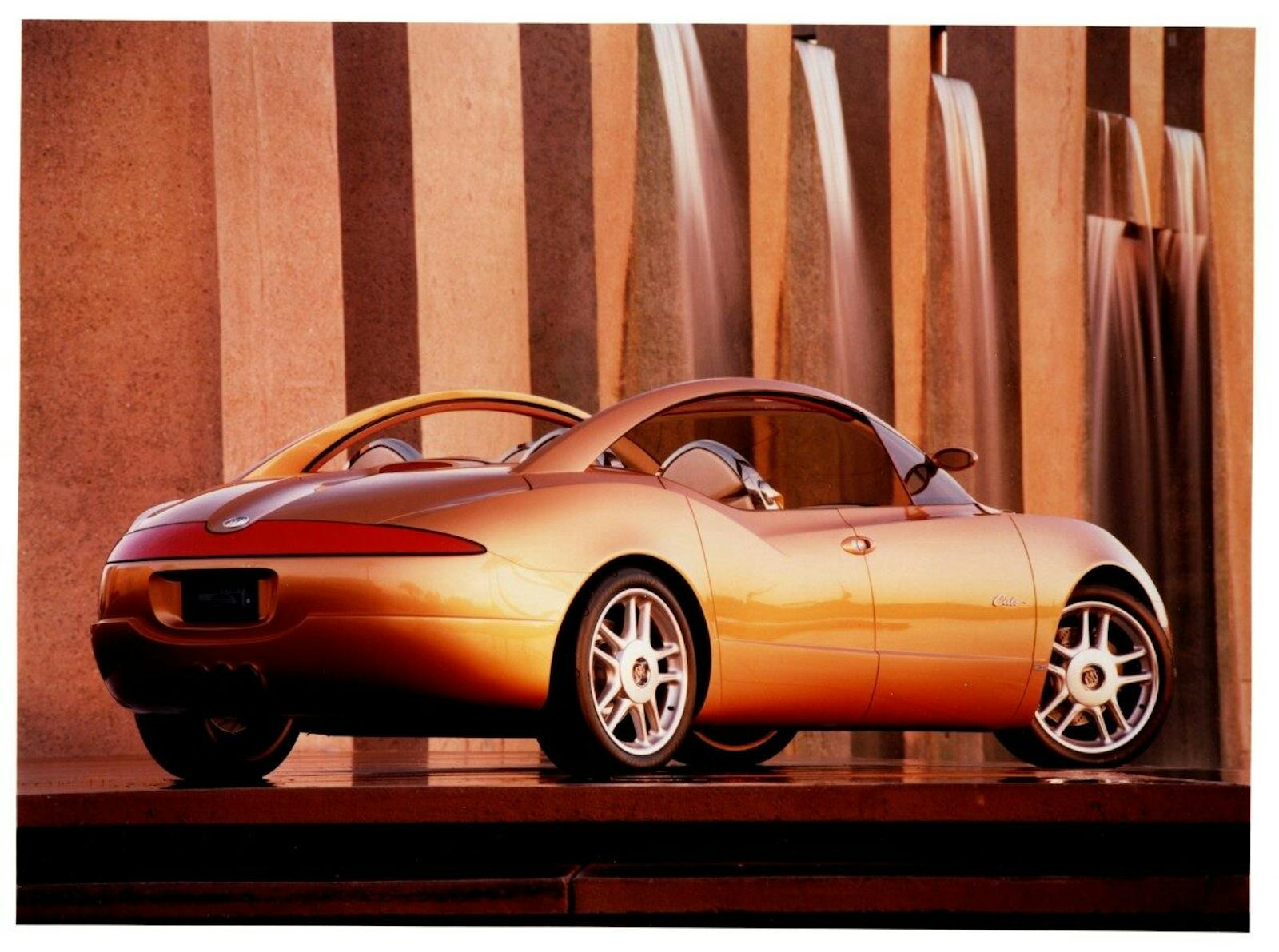

What I recall most about the start of Show and Display is that, despite its technical Innovations, the Lotus Elise S1 was among the first cars put on the disallow list. Now that I know that it was a Ferrari guy making the decisions, it makes more sense.
I feel the many roadblocks put in place to keep cars out if the country is silly. Show and display still seems needlessly complicated kind of like the 25 year rule keeping cars out of the country.